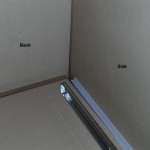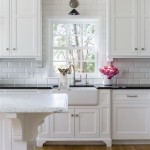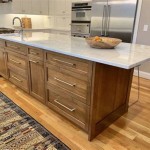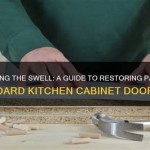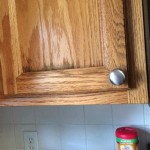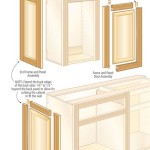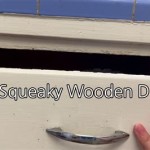Optimizing Kitchen Space with Kitchen Cabinet Dish Shelves
Kitchen cabinet dish shelves represent a significant element in kitchen organization, facilitating efficient storage and accessibility of dishware. The utilization of these shelves can dramatically impact the functionality of a kitchen space, contributing not only to the aesthetics but also to the overall workflow. Optimizing cabinet space with well-chosen and properly installed dish shelves is a crucial aspect of kitchen design, whether in a new construction or a remodel.
The market offers a wide variety of dish shelf options, each designed to address specific needs and preferences. These options range from simple, fixed shelves to more complex, adjustable, and specialized units. Understanding the different types of shelves, their materials, and their installation requirements is essential for making informed decisions about kitchen organization.
The selection of dish shelves often depends on several factors, including the available cabinet space, the quantity and type of dishware to be stored, and the budget. Before purchasing or installing dish shelves, it is important to carefully assess these factors to ensure that the chosen shelves meet the specific needs of the kitchen. Failure to do so can result in inefficient storage, limited accessibility, and ultimately, a less functional kitchen space.
Types of Kitchen Cabinet Dish Shelves
The categorization of kitchen cabinet dish shelves can be based on several criteria, including their construction material, their adjustability, and their specific function. Understanding these distinctions is key to choosing the right type of shelving for a given kitchen.
Fixed shelves represent the most basic type. These shelves are typically made of wood, plywood, or particleboard, and are permanently installed within the cabinet. They are a cost-effective solution for general storage, but their fixed nature limits their flexibility. The height between fixed shelves is predetermined during the cabinet's construction, making it difficult to accommodate items of varying sizes.
Adjustable shelves offer a greater degree of flexibility. These shelves are supported by shelf pins or clips that fit into pre-drilled holes along the interior walls of the cabinet. This allows the user to adjust the height of the shelves to accommodate different sizes of dishware and other kitchen items. Adjustable shelves are typically made of wood, glass, or metal, and offer a more adaptable storage solution compared to fixed shelves.
Pull-out shelves provide easy access to items stored at the back of the cabinet. These shelves are mounted on slides or glides, allowing them to be pulled out like drawers. This can be particularly useful for storing heavier items or infrequently used dishes. Pull-out shelves are often made of metal or wood, and they can be a significant convenience in a busy kitchen.
Another specialized type is the dish drying rack shelf. This type is designed to hold wet dishes after washing, allowing them to air dry directly within the cabinet. These shelves often feature a slatted or perforated surface to allow for drainage, and may include a drip tray to collect excess water. Dish drying rack shelves can help to keep countertops clear and prevent water damage to the cabinet interior.
Corner cabinet shelves, such as lazy susans or blind corner optimizers, are designed to maximize space in hard-to-reach corner cabinets. These shelves typically rotate or slide out, providing easier access to items stored deep within the corner. Corner cabinet shelves are available in a variety of materials and configurations, and can significantly improve the usability of corner cabinet spaces.
Materials Used in Dish Shelf Construction
The materials used in the construction of kitchen cabinet dish shelves greatly influence their durability, appearance, and cost. Common materials include wood, metal, glass, and plastic, each offering its own set of advantages and disadvantages.
Wood is a popular choice for dish shelves due to its natural beauty, strength, and versatility. Solid wood shelves can be very durable and can be stained or painted to match the kitchen décor. However, solid wood is more expensive than other options and can be susceptible to moisture damage. Plywood and particleboard are less expensive alternatives to solid wood, but they may not be as strong or durable. These materials are often covered with a veneer or laminate to improve their appearance and resistance to moisture.
Metal shelves, typically made of steel or stainless steel, offer excellent strength and durability. They are also resistant to moisture and are easy to clean. Metal shelves are often used in commercial kitchens and are becoming increasingly popular in residential kitchens due to their modern appearance and functional benefits. Stainless steel is particularly desirable for its resistance to corrosion and its hygienic properties.
Glass shelves can add a touch of elegance to a kitchen. They are easy to clean and allow light to pass through, making cabinets appear brighter. However, glass shelves can be more fragile than wood or metal shelves, and they may not be suitable for storing heavy items. Tempered glass is a stronger and safer option for dish shelves.
Plastic shelves are a cost-effective and lightweight option. They are resistant to moisture and easy to clean, making them suitable for use in dish drying areas. However, plastic shelves may not be as strong or durable as wood or metal shelves, and they may not be aesthetically pleasing in all kitchen designs. Plastic shelves are often used for temporary storage or in less visible areas of the kitchen.
Installation and Maintenance of Dish Shelves
Proper installation is crucial for ensuring the stability and functionality of kitchen cabinet dish shelves. The installation process varies depending on the type of shelf and the construction of the cabinet. Following the manufacturer's instructions is essential for a successful installation.
Fixed shelves are typically installed during the cabinet's construction. This involves securing the shelves to the cabinet walls with screws or nails. Ensuring that the shelves are level and properly aligned is important for preventing dishes from tipping over. Fixed shelves require minimal maintenance, but they should be periodically inspected for signs of damage or wear.
Adjustable shelves are installed by inserting shelf pins or clips into pre-drilled holes in the cabinet walls. The shelves are then placed on top of the pins or clips. It is important to use the correct type of pins or clips for the type of shelf and the construction of the cabinet. Adjustable shelves should be periodically inspected to ensure that the pins or clips are securely in place and that the shelves are level.
Pull-out shelves require more complex installation. This involves mounting the slides or glides to the cabinet walls and then attaching the shelf to the slides. It is important to use high-quality slides that can support the weight of the shelf and the items stored on it. Pull-out shelves should be periodically lubricated to ensure smooth operation. Inspecting the slides for wear or damage is also important.
Dish drying rack shelves require careful attention to drainage. Ensuring that the shelf is properly sloped to allow water to drain away is essential for preventing water damage to the cabinet interior. The drip tray should be emptied regularly to prevent the growth of mold and mildew. Dish drying rack shelves should be cleaned regularly to remove food particles and mineral deposits.
Regular maintenance is essential for extending the life of kitchen cabinet dish shelves. This includes cleaning the shelves regularly with a mild detergent and water, and inspecting them for signs of damage or wear. Wood shelves should be protected from excessive moisture to prevent warping or cracking. Metal shelves should be protected from corrosion. Glass shelves should be handled with care to prevent breakage. By following these maintenance guidelines, homeowners can ensure that their kitchen cabinet dish shelves remain functional and attractive for years to come.
The strategic placement of dish shelves within cabinets is also a critical consideration. Heavier items should be placed on lower shelves to improve stability and reduce the risk of injury when retrieving them. Frequently used items should be stored within easy reach, while less frequently used items can be stored on higher shelves or in less accessible areas of the cabinet. Optimizing the placement of items on dish shelves can significantly improve the efficiency and convenience of kitchen organization.
In conclusion, the careful selection, installation, and maintenance of kitchen cabinet dish shelves contribute significantly to the functionality and aesthetics of a kitchen. By understanding the different types of shelves, their materials, and their installation requirements, homeowners can optimize their kitchen space and create a more efficient and enjoyable cooking environment. The ongoing maintenance of these shelves ensures their longevity and continued contribution to an organized and functional kitchen.

43 Best Kitchen Drying Cabinet Ideas Dish Rack Racks

Cabinet Dish Rack Kitchen Organizers Metrostar Hardware

Dish Racks Traditional Other Metro Itb Kitchen Wardrobe Manufacturer Furniture Design Diy Storage

Kitchen Accessories Stainless Steel Dish Holder Cabinet Build In Drainer Rack Diy China Metal And Storage Shelf Made Com

Image Result For Upper Cabinet Dish Drying Rack Kitchen Shelf Design Cabinets Makeover New

Stainless Steel 304 Kitchen Cabinet Mounted Dish Rack 5 Sizes 560 Mm 660 760 860 960 Singapore Home Diy Hardware Tools My Beaver

Stainless Steel Dish Rack For Kitchen Cabinet Hanging Rak Pinggan 600mm 800mm 900mm

Kitchen Design Get The Dish Rack Off Counter Victoria Elizabeth Barnes

31 Creative Ways To Dishes And Utensils That Go Beyond Cabinetry Diy Kitchen Cabinets Rustic Remodel

Excel Progettista Nero Black Series Stainless Steel Grade 316 Dish R Hardware
Related Posts

